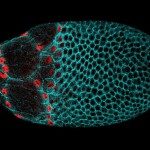Lien vers Pubmed [PMID] – 25950518
Genesis 2015 May;53(5):337-45
Heart valve development begins with the endothelial-to-mesenchymal transition (EMT) of endocardial cells. Although lineage studies have demonstrated contributions from cardiac neural crest and epicardium to semilunar and atrioventricular (AV) valve formation, respectively, most valve mesenchyme derives from the endocardial EMT. Specific Cre mouse lines for fate-mapping analyses of valve endocardial cells are limited. Msx1 displayed expression in AV canal endocardium and cushion mesenchyme between E9.5 and E11.5, when EMT is underway. Additionally, previous studies have demonstrated that deletion of Msx1 and its paralog Msx2 results in hypoplastic AV cushions and impaired endocardial signaling. A knock-in tamoxifen-inducible Cre line was recently generated (Msx1(CreERT2) ) and characterized during embryonic development and after birth, and was shown to recapitulate the endogenous Msx1 expression pattern. Here, we further analyze this knock-in allele and track the Msx1-expressing cells and their descendants during cardiac development with a particular focus on their contribution to the valves and their precursors. Thus, Msx1(CreERT2) mice represent a useful model for lineage tracing and conditional gene manipulation of endocardial and mesenchymal cushion cells essential to understand mechanisms of valve development and remodeling. genesis 53:337-345, 2015. © 2015 Wiley Periodicals, Inc.
